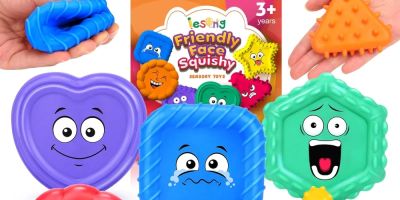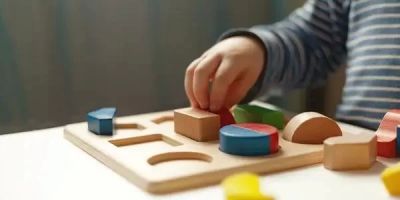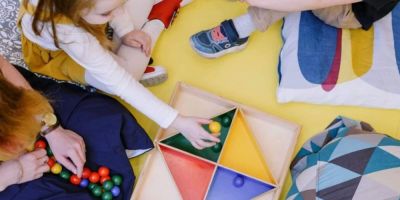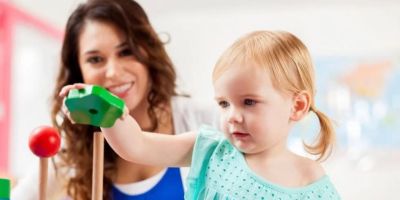- 1-Why-Toys-Are-Effective-Tools-for-Teaching-Right-from-Wrong
- 2-Features-to-Look-for-in-Toys-that-Teach-Morality
- 3-Best-Types-of-Toys-to-Help-Kids-Understand-Right-from-Wrong
- 4-Real-Life-Stories-Showing-Toys-Impact-on-Child-Development
- 5-How-Parents-Can-Maximize-the-Learning-from-These-Toys
- 6-Where-to-Find-the-Best-Educational-Toys-for-Moral-Learning
1. Why Toys Are Effective Tools for Teaching Right from Wrong
Toys have long been recognized as more than just playthings—they are essential tools that shape a child’s understanding of the world. When it comes to teaching kids right from wrong, toys serve as interactive mediums that engage children’s curiosity while offering lessons in empathy, fairness, and decision-making. Through role-play, storytelling, and guided activities, children can explore moral concepts in a tangible, memorable way.
Research shows that children learn best through hands-on experience. Toys that embody ethical dilemmas or promote cooperation encourage kids to think critically about choices and consequences. This method fosters moral reasoning much earlier and more naturally than verbal instruction alone.
2. Features to Look for in Toys that Teach Morality
When selecting the best toys to help kids understand right from wrong, certain features make a significant difference. First, the toy should encourage active decision-making, allowing children to see the impact of their choices in a safe environment. Toys with open-ended scenarios or cause-and-effect mechanisms work well here.
Second, social interaction is crucial. Toys that promote cooperation, sharing, or taking turns help children practice fairness and empathy. These features enable kids to experience moral concepts firsthand rather than just hearing about them.
Third, age-appropriate complexity ensures the lessons are accessible without causing frustration. Clear, relatable storylines or characters that reflect diverse perspectives help children connect emotionally, which strengthens moral learning.
3. Best Types of Toys to Help Kids Understand Right from Wrong
Several categories of toys stand out for their effectiveness in teaching moral lessons:
3.1 Role-Playing Sets
Role-playing toys such as dolls, action figures, or puppets allow children to act out scenarios involving kindness, honesty, or conflict resolution. For example, a family dollhouse set can create situations where children decide how characters respond to challenges, fostering empathy and ethical thinking.
3.2 Board Games with Ethical Themes
Games designed around cooperation and fairness, such as “The Game of Life” or “Outfoxed,” encourage children to work together and make choices that affect group success. These games reward positive behavior and teach the consequences of selfish actions.
3.3 Storytelling and Interactive Books
Toys that combine stories with interactive elements, like talking books or story dice, immerse children in moral dilemmas. Children learn by predicting outcomes or choosing paths that reflect good values.
3.4 Puzzle and Problem-Solving Toys
Complex puzzles that require patience and persistence teach children about honesty and effort. When children face challenges, they learn the value of perseverance and the ethical joy of honest accomplishment.
4. Real-Life Stories Showing Toys’ Impact on Child Development
Consider Sarah, a mother who noticed her shy son struggled with sharing. After introducing role-playing sets that encouraged cooperative play, she observed significant improvements. Through imaginative scenarios, her son practiced kindness and empathy, slowly internalizing the difference between selfishness and generosity.
Similarly, a preschool teacher named Tom used board games with his class to promote fairness. The children learned to take turns and celebrate others’ successes, which translated into better classroom behavior. These stories illustrate how the right toys can create real behavioral change, proving their value beyond entertainment.
5. How Parents Can Maximize the Learning from These Toys
Parents play a vital role in guiding children through the lessons toys offer. Engaging with kids during playtime by asking thoughtful questions like “What do you think happens if…?” or “How would you feel if that happened to you?” stimulates reflection on moral choices.
Setting a positive example reinforces lessons learned from toys. Children often mirror adult behavior, so parents who demonstrate fairness, honesty, and empathy strengthen the impact of these educational toys.
Regularly rotating toys to introduce new moral concepts keeps children challenged and curious. Combining toys with real-life experiences, such as volunteering or community activities, deepens children’s understanding of right and wrong.
6. Where to Find the Best Educational Toys for Moral Learning
For parents and educators seeking the best toys to help kids understand right from wrong, Knight Toys offers a carefully curated selection of educational and ethical toys. Their collection emphasizes quality, safety, and meaningful engagement to support children’s moral development.
Whether you are looking for role-playing sets, board games, or interactive storytelling toys, Knight Toys provides expert advice and a range of options tailored to different age groups and learning goals. Exploring their offerings can help you find the perfect tools to nurture empathy, fairness, and ethical thinking in children.





